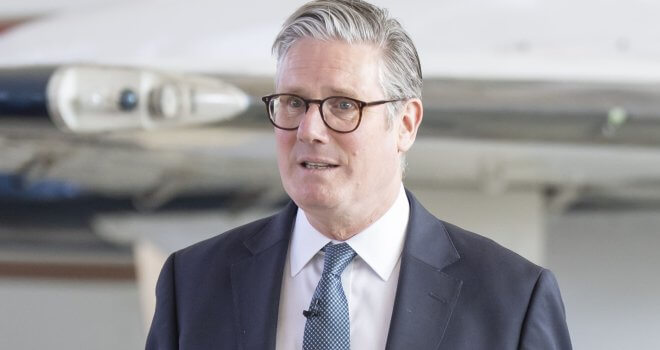More Than £3m Spent Covid-Proofing Treasury, FCA And Tax Offices

More than £3.1 million has been spent by the Treasury, the City watchdog and HM Revenue & Customs (HMRC) on making their offices Covid-19 secure for staff, new figures have revealed.
The data – obtained through a Freedom of Information request by the PA news agency – shows HMRC alone has forked out £2.9 million on coronavirus safety measures since March.
This includes £320,000 on hand sanitiser, personal protective equipment (PPE) and wipes, as well as £70,000 for “minor works”, such as installing protective screens and hygiene stations.
It has also built extra bike racks for staff avoiding public transport.

Figures from the Financial Conduct Authority (FCA) reveal the regulator spent £211,218 between March and October to make its offices safe during the pandemic.
And the Treasury faced a bill of more than £17,300 for its buildings – with £7,600 of that going on hand sanitiser and biocidal soaps.
It came after the public and private sector spent huge sums on Covid-19 safety measures as the Government led a push for staff to return to offices – only to make a swift U-turn as the second wave of the virus hit.
After a limited return to offices in the summer, the second and third English lockdowns have seen offices stand empty once again as the Government advised employees to work from home where possible.
Ahead of the November lockdown, some firms spared no expense to make it safer for staff to return to offices, with private equity firms such as Blackstone, Bridgepoint and Advent said to be offering coronavirus testing and in some cases taxis.
Financial data giant Bloomberg reportedly allows workers to claim £55 a day to cover commuting costs.
But the official data showed only 54% of working adults were travelling to work at the end of last year, which has now fallen further to 44%.
More than a quarter – 26% – are working exclusively from home, according to the early January survey by the Office for National Statistics (ONS).
As the biggest spender of those that responded to the FOI, HMRC’s Covid-19 expenses between March and October were eye-watering, but it stressed that the costs allowed its 90 offices across the UK to remain open to staff.
It is the third largest Government department, with 64,000 employees, and its offices have been open throughout the pandemic to “business-critical staff who are providing vital public services and developing and implementing the support measures introduced by the Government”, it added.
The FCA said the bulk of its Covid-19 office expenses went on hand sanitisers, dispensers and wipes – at £142,600.
Having bulk-bought sanitisers at the start of the crisis, it said it still has plenty remaining for when more staff return to its offices.
Another £9,311 was spent by the FCA on two thermal cameras to help it with coronavirus fever screening, while £7,552 went on masks, visors and gloves.
The FCA said: “The safety of our staff is paramount.
“Like all organisations, at the beginning of the pandemic the FCA sourced enough sanitiser to be used by our near 4,000 staff in our London and Edinburgh offices.”
The Treasury said most of its expenditure was on changes to facilities, with £6,759 spent on introducing a one-way system and screens, and another £2,732 on signs.
The Bank of England also recently revealed that it too paid out huge sums to make its Threadneedle Street headquarters and other offices Covid-19 secure, spending at least £117,000 between March and June – of which £14,300 went on hand sanitisers and £16,600 on masks.
But the Bank has actually spent more than five times that on home office equipment for its 4,447 staff – revealing earlier this month a hefty £598,000 bill for technology and office furniture to allow employees to work from home.
The central bank said it has budgeted £375 per employee for the cost of office furniture and work-related equipment where needed, but has so far spent £135 per worker between March and the end of October.




